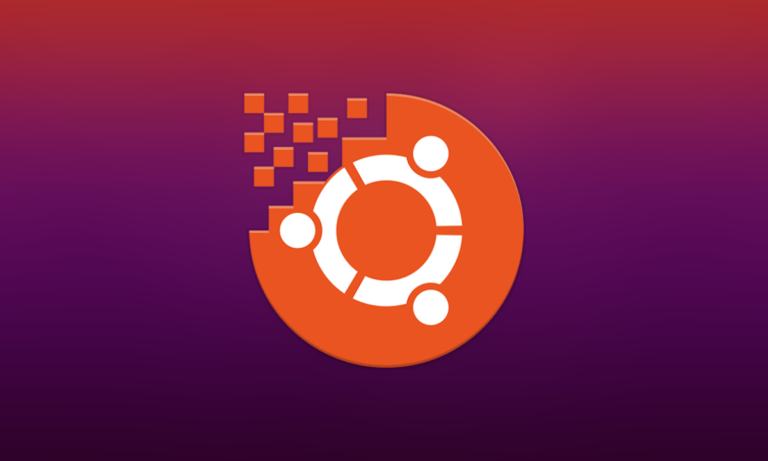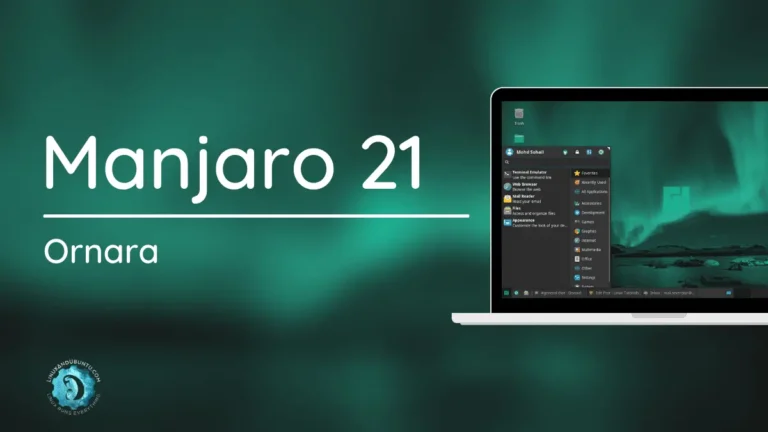Curious about Fedora Linux and its innovative features?
This article covers everything you need to know about Fedora, from its origins and development to its various editions and comparisons with other distributions.
Explore the history behind Fedora and its relationship with Red Hat, discover the different editions available, and learn about the installation process.
Whether you’re a seasoned Linux user or just getting started, this comprehensive guide will provide you with valuable insights into the world of Fedora Linux.
Key Takeaways:
- Fedora is a cutting-edge Linux technology that has a rich history and strong community support, making it a top choice for innovation and development.
- With advanced features such as package management and security, Fedora offers a secure and efficient platform for software and system installation.
- Fedora comes in various editions and is constantly evolving, making it a versatile and dynamic choice for different needs and preferences among Linux distributions.
Introduction to Fedora Linux
Fedora Linux, developed by the Fedora Project and sponsored by Red Hat, is a popular open-source operating system known for its innovative features and robust performance.
Originating in 2003, Fedora Linux was created with the aim of providing a cutting-edge platform that embraces the latest developments in the Linux ecosystem. The Fedora Project aims to foster a collaborative community-driven approach to software development, enabling users to contribute to and shape the operating system’s evolution. Under the sponsorship of Red Hat, Fedora benefits from the company’s expertise in enterprise-grade technologies, ensuring that it remains a versatile and reliable choice for both enthusiasts and businesses.
Overview and Definition
Fedora Linux, part of the Fedora Project initiated by Red Hat, stands out as a cutting-edge operating system within the realm of open-source software distribution, geared towards providing a seamless user experience.
Founded on the philosophy of innovation and collaboration, Fedora Linux serves as a platform that facilitates the development and distribution of free and open-source software. One of its primary objectives is to showcase the latest advancements in the Linux ecosystem by integrating cutting-edge technologies while maintaining stability and reliability. With a strong emphasis on community-driven development, Fedora Linux encourages active participation from users, developers, and contributors worldwide to shape the future of open-source software.
History and Development of Fedora
The history of Fedora traces back to its inception by the Fedora Project, with strong ties to Red Hat, showcasing a collaborative community effort that has led to numerous innovative versions and updates.
Since its introduction in 2003, Fedora has been a pioneer in the open-source software community. Initially known for its focus on quick releases and the integration of cutting-edge technologies, it quickly gained popularity among developers and enthusiasts. The close partnership between the Fedora Project and Red Hat has been instrumental in shaping the direction of the operating system, ensuring a seamless integration with Red Hat Enterprise Linux (RHEL).
Over the years, Fedora has evolved to incorporate the latest advancements in the Linux ecosystem, offering a stable yet constantly evolving platform for users. The community-driven ethos of Fedora has been a driving force behind its success, with contributors from around the world actively participating in its development. This collaborative approach has not only resulted in a wide range of software packages and tools but has also fostered a culture of innovation and continuous improvement within the Fedora community.
Origins and Red Hat Relationship
The origins of Fedora can be traced back to the establishment of the Fedora Project, a collaborative endeavor with Red Hat that has resulted in the creation of diverse versions and significant contributions to the Linux ecosystem.
Since its inception, Fedora has been at the forefront of innovation and open-source development, web hosting, fostering an enthusiastic community dedicated to pushing the boundaries of what Linux can achieve. The close partnership between the Fedora Project and Red Hat has not only led to the release of key versions like Fedora Core, Fedora Atomic Host, and Fedora Server, but also to the integration of cutting-edge technologies and practices.
Community involvement plays a pivotal role in driving the evolution of Fedora, with passionate users, developers, and enthusiasts actively participating in shaping the operating system’s features and functionalities. The collaborative efforts between the Fedora community and Red Hat have significantly impacted the broader Linux community, setting new standards and inspiring further advancements in the open-source domain.
Community and Contributions
The Fedora community plays a vital role in the development and success of Fedora Linux, with active contributions ranging from documentation and translation to providing support and fostering innovation.
Documenting every aspect of the Fedora ecosystem, volunteers articulate complex technical procedures into comprehensive guides that make the platform accessible to users of all skill levels. This level of thorough documentation is essential for ensuring a seamless experience for individuals new to Fedora.
The community’s multilingual collaboration extends Fedora’s reach globally, making it more inclusive and user-friendly. These translation services ensure that language barriers do not hinder anyone from utilizing the full potential of Fedora Linux.
With a strong emphasis on user support, the community creates an environment where individuals can troubleshoot issues efficiently and effectively. This continual exchange of knowledge and expertise enriches the overall user experience and contributes to the stability of the Fedora ecosystem.
Features of Fedora Linux
Fedora Linux boasts advanced features in package management, security protocols, and a user-friendly software installer, complemented by a customizable desktop environment that caters to diverse user preferences.
Known for its robust package management system, Fedora Linux ensures that users can easily install, update, and remove software packages efficiently. Its repository contains a vast array of applications, ranging from essential utilities to niche tools, enhancing the overall user experience.
In terms of security measures, Fedora takes a proactive approach by integrating the latest security technologies, frequent updates, and vulnerability patches to safeguard user data and privacy. Users can feel confident in the system’s ability to protect their information.
The intuitive software installation process on Fedora simplifies the user journey, allowing even newcomers to the Linux environment to effortlessly set up their preferred applications. This emphasis on user-friendliness makes Fedora a popular choice for those looking for a seamless operating system experience.
The flexibility offered by Fedora’s desktop environment enables users to tailor their workspace according to individual preferences. Whether it’s choosing a specific layout, themes, or widgets, the customization options give the power to users to create a personalized computing environment that suits their workflow and aesthetics.
Package Management and Security
Fedora Linux excels in package management by offering secure repositories, timely updates, and reliable software distribution mechanisms, ensuring a stable and secure environment for users.
The secure repository system in Fedora Linux is a cornerstone of its package management capabilities. By maintaining a curated collection of software packages vetted for security and compatibility, users can trust the integrity of the software they install. This dedication to security extends to the commitment to regular updates, which play a crucial role in addressing vulnerabilities and keeping the system resilient against emerging threats.
The reliability of software distribution channels in Fedora Linux ensures that users can access and download software packages without compromising on authenticity or safety. These channels are carefully monitored and maintained to prevent unauthorized access or tampering.
Software and System Installer
The software and system installer in Fedora Linux, powered by the Anaconda installer, offers a seamless user interface and intuitive installation process, simplifying system setup for users.
One key aspect of the Anaconda installer is its ability to guide users through the entire installation process with clear instructions and options. It allows users to customize their installations by selecting specific packages, partitioning their drives, and configuring network settings during the initial setup.
The Anaconda installer supports various installation methods, including network, local media, and even network boot options, catering to different user preferences and scenarios. It ensures a smooth installation experience by handling complex tasks in the background while presenting a straightforward interface to users.
Editions of Fedora
Fedora offers a diverse range of editions catering to different user needs, including Fedora Workstation for desktop users, Fedora Server for enterprise applications, and Fedora IoT for Internet-of-Things devices.
Plus these core editions, Fedora also provides Fedora Spins, which are custom variations of Fedora focused on specific interests like gaming, design, or robotics. Fedora Labs editions target specific user groups such as artists, musicians, or scientists, offering pre-installed software tailored to their needs. Furthermore, Fedora CoreOS is designed for running containerized applications at scale, providing a minimal footprint and automatic updates for cloud environments.
Workstation, Server, and IoT Editions
The Workstation, Server, and IoT editions of Fedora cater to distinct user requirements, offering tailored features such as desktop environments, server management tools, and IoT compatibility.
Fedora Workstation, designed for developers and creators, provides a polished GNOME desktop environment for an intuitive user experience infused with productivity tools.
On the other hand, Fedora Server focuses on delivering a robust platform for server management, optimized for running essential server workloads efficiently.
For those involved in the Internet of Things realm, Fedora IoT edition offers specialized support and tools for building and deploying IoT applications seamlessly.
The diverse editions of Fedora address a wide range of user needs, from graphical desktop users to system administrators and IoT developers.
CoreOS, Labs, and Architectures
Fedora CoreOS, Fedora Labs, and various architectures provide specialized solutions such as container support, developer tools, and optimized operating environments for specific hardware configurations.
These editions are designed to cater to the diverse needs of users, from system administrators to developers, offering the necessary tools to streamline their workflow. Fedora CoreOS focuses on containerized applications, ensuring a secure and efficient deployment environment for modern cloud-native technologies. On the other hand, Fedora Labs offers a range of tailored environments for specific use cases, such as robotics, gaming, or scientific computing, give the power toing users with specialized tools and pre-installed software packages to kickstart their projects.
Comparisons with Other Linux Distributions
Fedora Linux stands out among other Linux distributions such as Debian, CentOS Stream, Arch Linux, and Ubuntu by offering a unique blend of cutting-edge features, community support, and robust security protocols.
When comparing Fedora to Debian, Fedora often appeals to users who prefer the latest software updates and bleeding-edge technologies, whereas Debian focuses more on stability and reliability.
CentOS Stream, on the other hand, is tailored for enterprise environments, providing a predictable release cycle and long-term support.
Arch Linux attracts advanced users seeking total control over their system through its minimalist design and rolling-release model.
Fedora’s user-friendly approach makes it suitable for both beginners and experienced users who want a balance between innovation and stability.
Ubuntu is known for its large user base and extensive software repository, making it a popular choice for desktop users looking for a well-supported and versatile operating system.
Debian, CentOS Stream, Arch Linux, and Ubuntu
Debian, CentOS Stream, Arch Linux, and Ubuntu represent popular alternatives to Fedora Linux, each with its unique features, support mechanisms, and community-driven development models.
Debian, known for its stability and security, is ideal for servers and conservative users. Its package management system, APT, and extensive repositories provide a wide array of software options. It may lack the latest features due to its focus on stability.
CentOS Stream, derived from RHEL, offers a stable base for enterprise environments and receives continuous updates. It bridges the gap between stability and newer features, making it suitable for production servers.
Arch Linux, a rolling-release distro, caters to advanced users who prefer customization and latest software. Its minimalistic approach allows users to build their system from the ground up, but it requires a steep learning curve.
Ubuntu, known for its user-friendly approach, offers a balance between ease of use and functionality. With its LTS releases and large community support, Ubuntu is suitable for beginners and experienced users alike.
Installation Process of Fedora
The installation process of Fedora, powered by the Anaconda installer, is user-friendly and efficient, ensuring seamless setup on a wide range of hardware configurations.
Before initiating the installation, it is recommended to check the hardware compatibility to ensure a smooth setup. The Anaconda installer, being intuitive, guides users through the process with clear prompts and instructions. The initialization steps involve booting from the Fedora installation media and launching the Anaconda installer. Users can then choose their language, set up disk partitions, configure network settings, and select software packages to install.
- One of the best practices for a successful Fedora installation is to allocate disk space wisely, ensuring enough room for the operating system and any additional software.
- Keeping all necessary drivers and firmware handy can help resolve any compatibility issues that may arise during or after the installation process.
- Completing the installation setup with a strong internet connection can also facilitate the download of necessary updates and packages for an optimized Fedora experience.
Getting Started with Installation
Embarking on the installation journey with Fedora Linux involves utilizing the Anaconda installer, ensuring hardware compatibility, and seeking community support for a smooth and successful setup process.
Before diving into the installation process, it’s essential to gather all necessary hardware information, such as CPU type, amount of RAM, and available storage space. Properly sizing partitions is crucial to allocate space efficiently for Fedora. Checking compatibility with peripherals like printers and scanners can save you from potential issues later.
One of the standout features of Fedora is its robust community support. If you encounter any roadblocks during installation, a quick search on the forums or reaching out to the active community members can often offer answers. Remember, troubleshooting is part of the learning process, and the Fedora community is there to guide you through it.
Pros and Cons of Fedora Linux
Fedora Linux presents a myriad of advantages, including robust security features, frequent updates, and a passionate user community, yet it also comes with certain challenges such as occasional software compatibility issues and a learning curve for new users.
One of the standout features of Fedora Linux is its commitment to security,, with built-in tools and practices that prioritize safeguarding user data and system integrity. The community engagement surrounding Fedora is vibrant, with active forums, support channels, and regular contributions from developers and enthusiasts alike. The frequent updates offered by Fedora ensure that users have access to the latest software advancements and security patches, keeping their systems up-to-date and protected.
A potential drawback of Fedora Linux lies in software compatibility concerns, as some applications may not be readily available or optimized for this distribution. This can sometimes lead to users needing to find workarounds or alternatives to fulfill their specific software requirements. For those new to Linux or operating systems in general, Fedora’s learning curve might prove to be steep, requiring a period of adjustment and familiarization with the environment and commands.
Advantages and Disadvantages
The advantages of Fedora Linux encompass robust security measures, active community participation, and regular updates, offset by potential disadvantages such as software compatibility challenges and the need for continuous learning due to frequent system enhancements.
One of the most notable advantages of Fedora Linux is its strong focus on security. It comes with built-in security features and tools, making it a preferred choice for users concerned about their data privacy. The community-driven aspect of Fedora means that users can benefit from a vast pool of collective knowledge and support. This active community not only provides assistance but also contributes to the constant evolution and improvement of the operating system.
Regular updates are another key advantage of Fedora Linux. These updates ensure that the system remains secure, stable, and up-to-date with the latest software advancements. Users can rely on the consistent release schedule to receive new features and enhancements regularly.
In terms of drawbacks, one common challenge faced by Fedora users is software compatibility issues. Some proprietary software may not be readily available or may require additional configurations to run smoothly on the system.
Another potential disadvantage is the learning curve associated with frequent system upgrades. While the regular updates are beneficial, they can also require users to adapt to changes and new features regularly, which may take time and effort to master.
Conclusion and Summary
Fedora Linux emerges as a dynamic and feature-rich operating system that excels in security, user support, and software innovation, supported by a vibrant community that drives its continuous development and growth.
Fedora Linux stands out for its commitment to security, offering robust defenses against cyber threats and providing timely updates to shield users from vulnerabilities.
The active engagement of the community fosters a collaborative environment where users contribute feedback, ideas, and solutions, shaping the direction of the operating system.
Noteworthy is Fedora’s focus on software advancements, delivering cutting-edge technologies and tools that cater to both developers and general users, enhancing the overall computing experience.
FAQs about Fedora Linux
Explore common questions and answers related to Fedora Linux, addressing user queries on installation procedures, software compatibility, community support, and best practices for optimizing the Fedora experience.
In terms of installing Fedora Linux, users often wonder about the system requirements needed for a smooth installation process. To ensure a successful setup, it is recommended to have a minimum of 2 GB of RAM and at least 20 GB of available disk space. In case you encounter any issues during installation, troubleshooting steps such as checking the integrity of the installation media or verifying hardware compatibility can help resolve common problems.
Common Questions and Answers
The common questions and answers section for Fedora Linux aims to address key user inquiries regarding installation procedures, software compatibility, community-driven support options, and strategies for optimizing system performance.
In terms of installation troubleshooting, one of the most common queries involves booting from a USB drive or creating a dual-boot setup. Users often seek guidance on partitioning their drives effectively during the installation process to ensure a smooth setup.
Questions about software selection frequently arise, with users looking for recommendations on productivity tools, development environments, and multimedia applications that best complement Fedora’s capabilities.
Community assistance avenues play a crucial role in the Fedora ecosystem, and users can turn to forums, chat rooms, and documentation to seek help and share knowledge.
Optimizing system performance is a top concern, prompting questions on tweaking settings, managing resources efficiently, and utilizing performance-enhancing tools.
Frequently Asked Questions
What is Fedora and how does it lead innovation with cutting-edge Linux technology?
Fedora is an open-source operating system that is based on the Linux kernel. It is maintained by the Fedora Project, a community-driven project sponsored by Red Hat, Inc. Fedora is known for its commitment to innovation and regularly incorporates cutting-edge technology into its operating system.
What makes Fedora different from other Linux distributions in terms of innovation?
Fedora’s focus on innovation is evident in its rapid release cycle, with new versions being released every 6 months. This allows for the integration of the latest and most cutting-edge technologies into the operating system, giving users access to the most advanced features and tools.
How does Fedora stay ahead of the curve in terms of technology?
One of the ways that Fedora stays ahead of the curve is through its close collaboration with the open-source community. The Fedora Project actively encourages and supports contributions from developers and users, allowing for the integration of new technologies and ideas from a wide range of sources.
What benefits does Fedora’s use of cutting-edge Linux technology bring to its users?
By incorporating cutting-edge technology, Fedora is able to provide its users with a powerful and versatile operating system that is constantly evolving and improving. This allows for a smoother and more efficient user experience, as well as access to the latest tools and features.
Is Fedora suitable for all users, even those who may not be tech-savvy?
While Fedora’s focus on innovation and cutting-edge technology may seem intimidating to some users, the operating system is designed to be user-friendly and accessible to all. With its intuitive interface and extensive documentation, even those who are not tech-savvy can easily use and benefit from Fedora.
Can I contribute to Fedora’s innovative advancements in Linux technology?
Absolutely! The Fedora Project is always looking for new contributors, whether you are a developer, designer, writer, or just a passionate user. By joining the community, you can help shape the future of Fedora and contribute to its cutting-edge technology developments.



